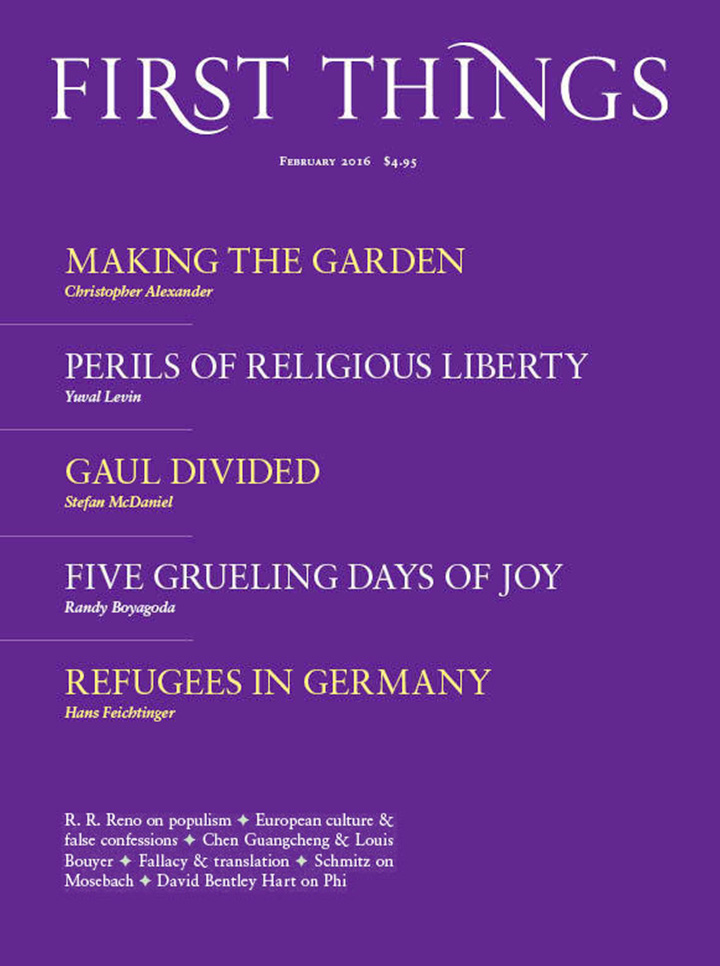What Was Before
by martin mosebach
translated by kári driscoll
seagull, 248 pages, $27.50
A
woman asks a man what his life had been like before they met, and he tells her of a glittering world now gone: A group of well-to-do Germans gathers for poolside parties in the countryside near Frankfurt, vacations in the Mediterranean, and cozy sledding trips. None of them notice that a chain of small events is underway that will threaten their finances, their social positions, and their marriages—even as it brings two lovers together. This is the setup of What Was Before, Martin Mosebach’s first novel to be translated into English. Since the man’s story dwells on seemingly irrelevant details and takes in every tangent, the woman occasionally interrupts her lover to get him back on topic. Only at the end will she realize, along with the reader, that this is a story in which accident is of the essence.
Our narrator (whose name we never learn) begins the tale with his move to Frankfurt. He selects an apartment there on the strength of its being shaded by an ancient chestnut, “an undulating ocean of leaves” whose “silent movement was like the breathing of a body at rest.” Light filters into his room through its boughs, as does the song of a nightingale, a bird he has known only from literature. When the narrator returns from a weekend away, he finds that the tree has been cut down. This is the first of the novel’s many unexpected destructions, and it is a foreboding one. The tree’s stump has bright yellow edges, but a rotten core that looks like “loose tobacco.” Had it toppled, it would have torn his balcony down with it.
Friendless in this new city, our narrator enters one of those melancholy periods in which you are “alone with your thoughts, hardly speaking.” He begins to notice things he never would have noticed before. Who is this “Baron Slavina,” whose nameplate hangs on a door down the hall? On what basis does the baron invite such disparate guests up to his flat? And why is he never himself seen in the hall? But our narrator finds more to investigate than this minor mystery. He seeks the “hidden states detectable on the surface of reality only as tiny tremors.”
An invitation to a party in the country gives our narrator a new chance to deploy his powers of observation. He first notices his hosts’ daughter, Phoebe Restop. Phoebe is “so well proportioned that Canova might have been a naturalist after all.” Her parents, Bernward and Rosemarie, preside over this party with perfect good manners—toward their guests and toward each other. Helga is Rosemarie’s “friend” (though perhaps she is more of a servant), an interior decorator responsible for every bauble in the lavish home. Then there is the beautiful Silvi and her husband Hans-Jörg Schmidt-Flex, a man whose awkwardness is revealed by his “penchant for paraphernalia”—lunar chronometers, open-backed driving gloves, and guillotines for cigars.
On the edge of this set prowls Joseph Salam, a man full of business plans and animal instinct. He doesn’t quite fit in and so Rosemarie decides to “cull” him. After all, a “solitary Salam might be all right for adding a bit of colour to a Sunday afternoon,” but at some point people might ask, “Where was it we met that awful fellow? Ah yes, at the Hopstens.” Her act precipitates a crisis. Business deals fizzle, affairs begin, marriages end. Only the interloping Salam survives unscathed.
E
ach turn of the plot is elegantly shown to be the product of minor accidents and tiny details. For Mosebach, everything depends on what seems most minor. When the narrator sees the aloof Baron Slavina at a party, he wonders whether the keys the baron is twirling in his hand are not some kind of invisible motor, “turning the crank of the party and keeping it going.” The keys emblematize Mosebach’s aesthetic. Small and banal things determine events. Each apparent tangent moves the plot toward a careful conclusion.
For example, there is the cockatoo. When the narrator walks into the Restops’ parlor and sees a white cockatoo, he is “seized by an insane notion—that this whole shimmering, grey parlour in all its stucco lustro elegance, surrounded by these emerald green fields, this yellow kidskin, the carved ivory, the freshly polished silver, the puffed-up general—that all this was, in truth, a shrine to this cockatoo.” When the Restops take a trip to Italy, their cockatoo goes to stay in Helga’s shop. When the bird bites her finger, Salam, who happens to have stopped by, quickly begins to suck the blood from the wound. Suddenly and for the first time, he is attracted to Helga. Several plot turns ensue, leading to a new business opportunity for Helga. And when Helga goes looking for an assistant, she finds . . . a young woman who is also a candidate for the narrator’s affections.
In his native Germany, Mosebach is celebrated for his ten novels and several short story collections, which have won him Germany’s most prestigious literary award, the Georg Büchner Prize. Until now, he has been known to English readers only as the author of The Heresy of Formlessness, a book of essays on the Roman Rite. There, Mosebach brings his artist’s sensibility to disputes over liturgy, applying his intuition that form cannot be separated from substance without changing the substance. The “non-essentials” either express the essential or betray it:
I admit quite openly that I am one of those naive folk who look at the surface, the external appearance of things, in order to judge their inner nature, their truth, or their spuriousness. The doctrine of supposedly “inner value” hidden under a dirty and decrepit shell is something I find highly suspicious. I already believed that the soul imparts a form, a face, a surface to the body, even before I learned that it was a truth defined by the Church’s teaching authority. Consider me a Mediterranean primitive, but I do not believe a language that is untrue, full of deceit, and lacking in feeling can contain ideas of any value.
The same conviction guides Mosebach’s eye as a novelist. When Bernward Restop (“in no way . . . a seasoned connoisseur of the female figure”) thinks of Silvi Flex-Schmidt, whom he secretly desires, he has his own, not exactly religious, epiphany: The substance is inseparable from the form—or, more concretely, the body from the soul:
The generally received notion that there is such a thing as a soul or spirit that inhabits various different bodies—as well as hotel rooms of varying quality—but has nothing very much to do with the bodies it inhabits collapsed when it came to Silvi. Her body at least was identical with her spirit, there was no way of separating them. Without that body she was mute, with it, highly loquacious. . . . The plasticity, smell, weight, delicacy, tactility of the body—Silvi’s body—were in any case superior to ordinary language. There was no need for abstractions to serve as crutches and prosthetics—the fundamental, the ideal, the universal found its superlative formulation in the visible. There was a seamless correspondence between the two.
T
hese are explicit statements of a thesis that is implicit throughout What Was Before. The spiritual is disclosed in the material; providence works through chance. In a recent address in New York, Mosebach described the metaphysical outlook of his countrymen: “In Germany we like to distinguish between the glistening surface and the deeper values. Preferably, deeper values are not externally perceptible.” This mistake springs from “that German vice, philosophy,” which “revels in the separation—impossible in reality—of content and form.” If “philosophy” thus described is a German vice, still it is a vice that this celebrated German writer does not share. In Mosebach’s world, there are no ghosts, no pure spiritual forms floating by. Nor are there any brute facts. Each gesture or ritual, each curve of a shoulder or fluctuation in fashion, is ready to proclaim its truth.
Like his narrator, Mosebach is concerned with the “hidden states detectable on the surface of reality only as tiny tremors.” And so he has written a novel of detection—of investigation not just into how one relationship came to be, but into being itself. What Was Before is not a novel of ideas, let alone a Catholic novel, but behind it lies an idea, perhaps a religious one, of how spirit and flesh cleave together. Whether Mosebach arrived at this idea through Mediterranean simplicity, study of hylomorphic theory, or a belief in the Incarnation hardly matters. He has refined it into art.
Matthew Schmitz is literary editor of First Things.
In Praise of Translation
This essay was delivered as the 38th Annual Erasmus Lecture. The circumstances of my life have been…
Caravaggio and Us
Nicolas Poussin, the greatest French artist of the seventeenth century, once said that Caravaggio had come into…
Canticle of All Creatures
This poem was written by St. Francis of Assisi, and translated by Dana Gioia. Most high, all…



